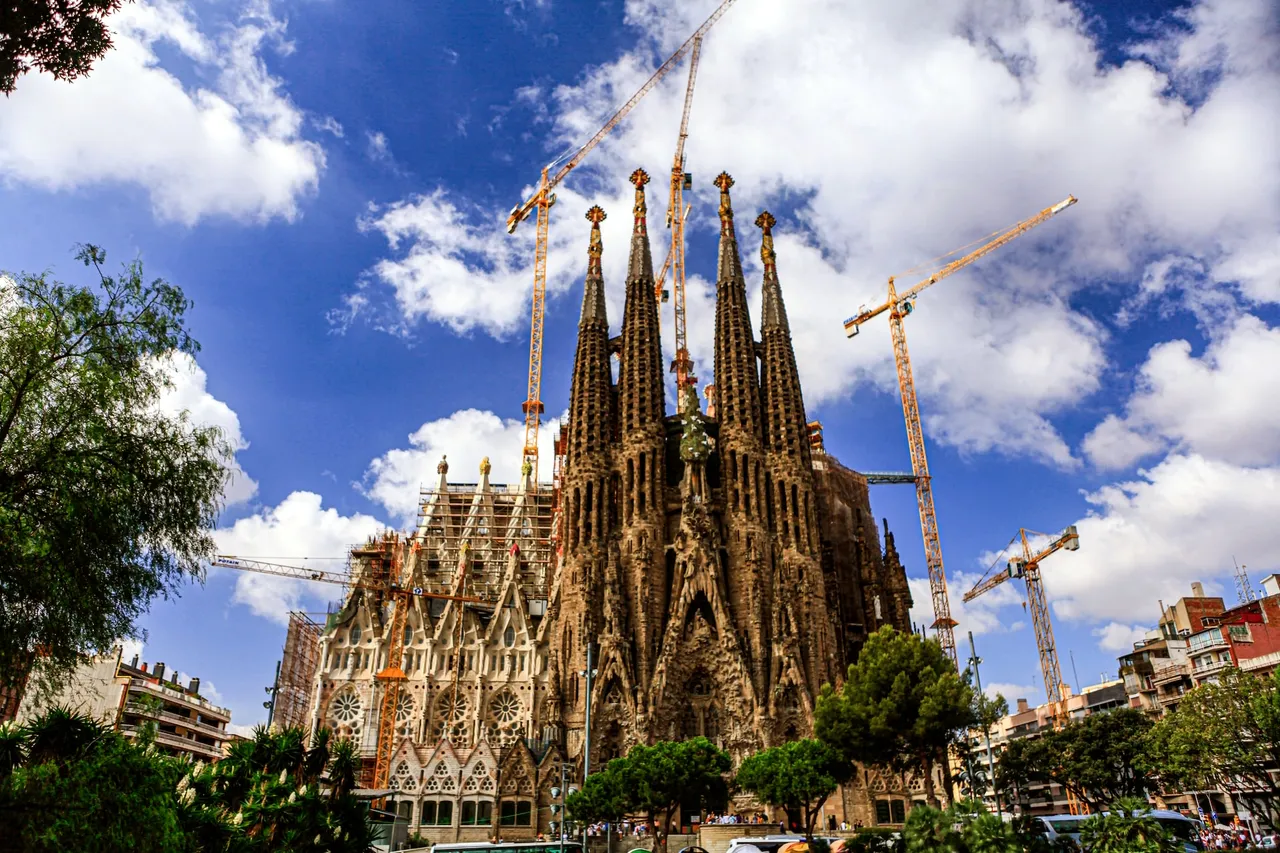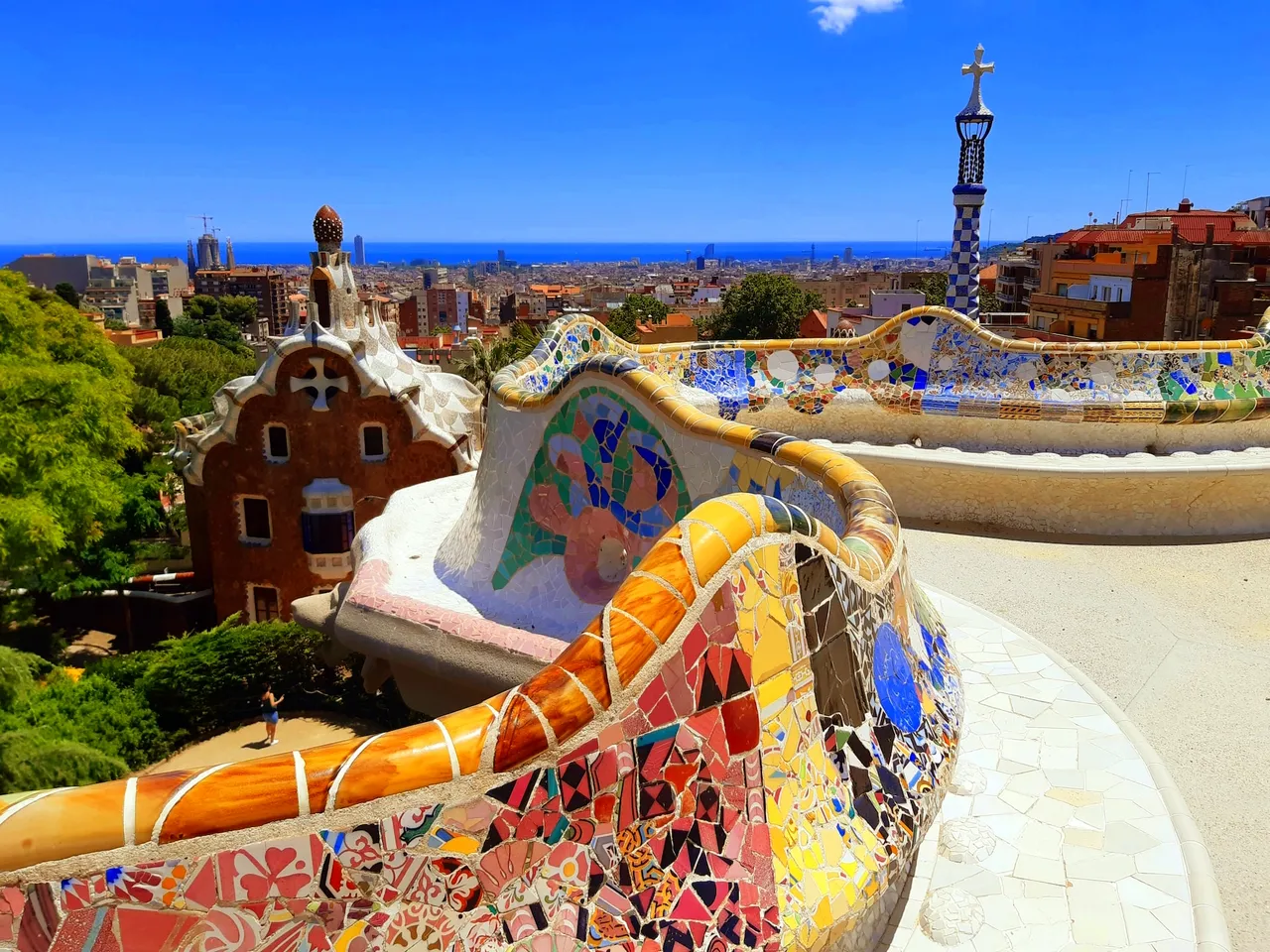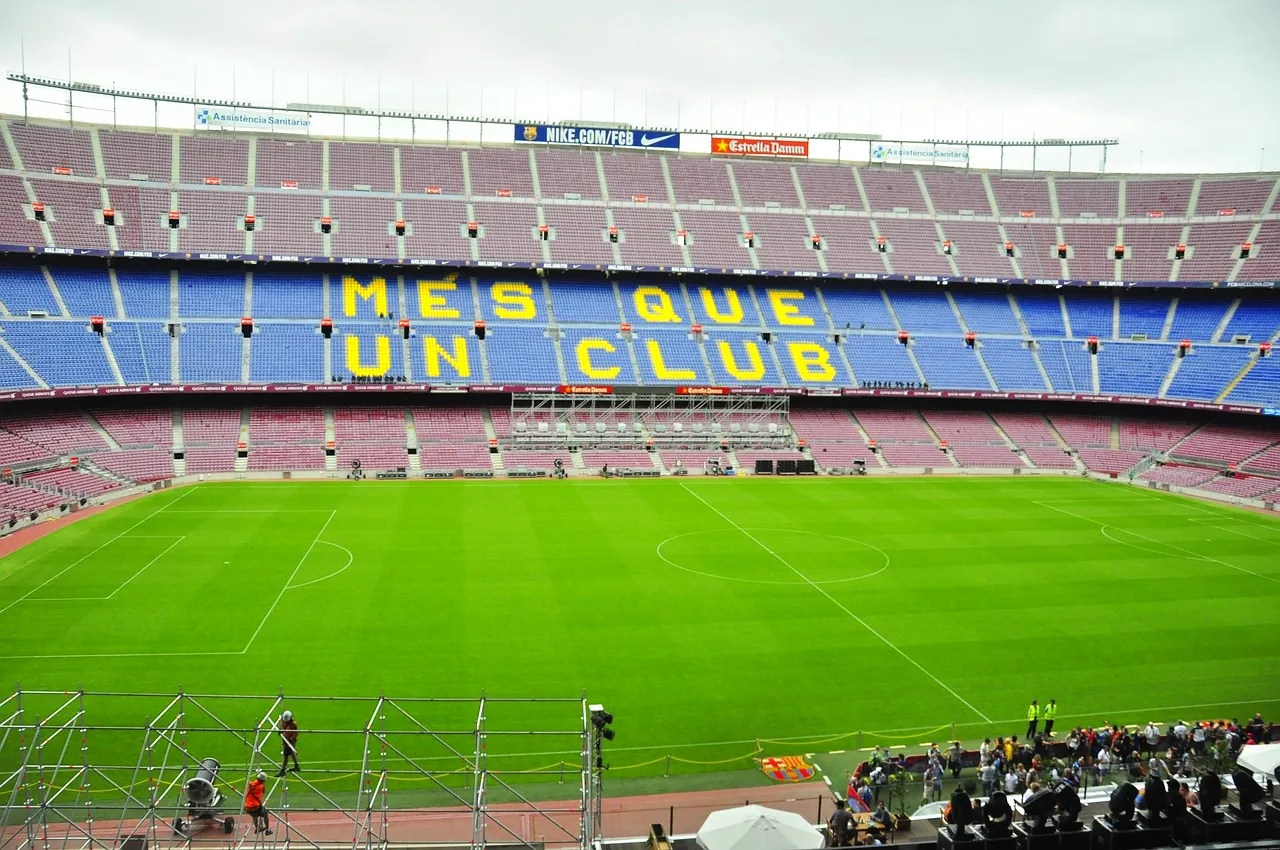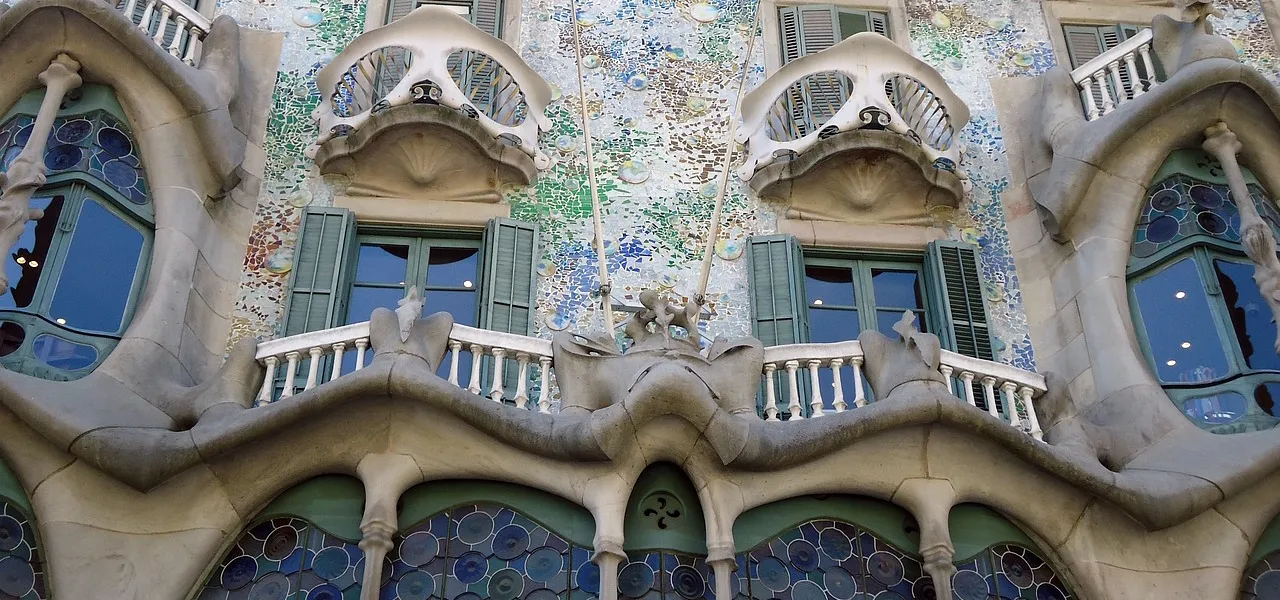“The straight line belongs to Man. The curved line belongs to God.”
Let’s take a trip through the architectural genius of Antoni Gaudi, discovering how his love for nature, and passion for innovation hailed him as the legend of Modernism architecture.
Early Life and Background
Here is a little background on the Catalan architect Antoni Gaudi:
This quote by Antoni Gaudí perfectly sums up his architectural brilliance as Gaudí worked taking inspiration from the natural curves and forms that define the world around us. If you find yourself strolling through Barcelona city, you will encounter the works of Antoni Gaudí in the buildings in Barcelona — where fairy-tale spires meet the fluidity of waves, and detailed mosaics tell stories of a creative imagination. Born in 1852 in Reus, Spain, Gaudí’s approach to architecture was considered radical for its time, challenging conventional norms and merging the organic, the whimsical, and the fantastical.
Birth and Family
Architect Antoni Gaudí was born in Reus, a picturesque town in Catalonia, on June 25, 1852. His family was already involved in the traditional craftsmanship of the region. Antoni’s father, Francesc Gaudí was also a coppersmith while his mother, Antònia Cornet, came from a family of artisans too. This creative environment was the first thing to influence Gaudi, paired with the rolling hills and vibrant flora of Catalonia.
Education
Gaudí’s formal education in architecture began at the Llotja School and the Barcelona Higher School of Architecture, where he enrolled in 1873. The institution was a magnet of intellectual and artistic activity, and it played a crucial role in shaping Gaudí’s future. As you can imagine, his time at school was marked by a growing fascination with unique materials and out-of-the-box techniques.
During his time at school, Antoni Gaudí i Cornet was influenced by multiple mentors, and, in turn, influenced them with his innovative approach to design.
Among them was the renowned architect Elies Rogent, who guided him in understanding classical architectural principles. Elies was the director of the School of Architecture of Barcelona at the time when Gaudi was graduating, and he said this while signing Gaudi’s papers: “We have given a degree to a madman or a genius, time will tell.”
In particular, it was the world of the Gothic and Baroque periods along with the burgeoning Modernisme movement that really shaped Gaudi’s views on architecture.
Initial Projects(Casa Vicens)
The beginning of Gaudi’s professional career as an architect was modest but led to the foundation of his iconic approach. When Gaudi was 31 years old, and the ink on his architecture degree had hardly dried, he received a commission to design a summer house in Barcelona from Manuel Vicens i Montaner. The four-story Casa Vicens was completed in 1885 and became the earliest example of Art Nouveau architecture—celebrated for its unique blend of Moorish Revival, Gothic, and Oriental styles.
Another notable early project was the El Capricho (1883-1885) in Comillas, Cantabria, a summer residence for a wealthy industrialist. Here, Gaudí’s creativity was evident in the use of bright ceramic tiles and whimsical forms replicating nature’s rhythm.
Major Works of Antoni Gaudi in Barcelona
Antoni Gaudí’s architectural genius is most clearly displayed in his works scattered throughout Barcelona. Here’s a detailed look at some of his most significant masterpieces in the city:
Sagrada Familia
La Sagrada Familia is one of Antoni Gaudí’s most celebrated works, and its story is as interesting as its architecture. Construction began in 1882, thanks to a commission from the Asociación de Devotos de San José, with the plan of creating a grand basilica dedicated to the Holy Family. Gaudí took over the design in 1883, and he devoted the rest of his life to the project. Over a century later, the construction of the Church of the Sagrada Familia is still ongoing, making it one of the most ambitious and long-standing architectural projects in the world.
The basilica will have 18 towers, with the tallest representing Jesus Christ and reaching an impressive 172.5 meters high. The four surrounding towers will honor the Evangelists, and additional towers will be dedicated to the Virgin Mary and the apostles.
The basilica’s facades are equally remarkable: the Nativity Facade, completed, is covered with detailed sculptures celebrating Christ’s birth; the Passion Facade, still under development, depicts the suffering of Christ with its dramatic, angular design; and the Glory Facade, planned for the future, will represent Christ’s heavenly glory. Inside, the basilica mimics the feeling of a forest, with columns that emulate tree trunks and colorful stained glass windows that fill the space with a magical light.
Today, the Sagrada Familia still stands tall with an under-development tag, funded mainly through private donations and visitor tickets. Although originally hoped to be completed by 2026, the expected finish date has been pushed to the 2030s due to the scale of the work.
Park Güell
Park Güell began as an ambitious residential project in the 19th and early 20th century, and it was Eusebi Güell, a wealthy industrialist, who commissioned Gaudí. The original plan was to create an exclusive housing estate for the elite residents of Barcelona, and Gaudi, with his nature-inspired architectural design, was the perfect choice for this vision.
However, the project didn’t attract buyers as expected, and only two houses were ever built. By 1914, it was clear the residential plan wouldn’t succeed, so the area was repurposed as a public park, which officially opened in 1926. Despite the shift in purpose, Gaudí’s original designs remained intact, turning Park Güell into one of Barcelona’s most iconic and beloved public spaces.
Among the most iconic design features of the park is the serpentine bench, a long, winding bench that stretches along the park’s main terrace. This bench is covered in a mosaic of broken ceramic tiles, a technique known as “trencadís,” Gaudí’s signature style. Another famous feature is a mosaic-covered dragon sculpture known as “El Drac,” located at the park’s entrance. The dragon stands at the base of a grand staircase, which leads to the park’s Hypostyle Room, an area supported by 86 stone columns designed to resemble tree trunks.
The park also includes a series of functional yet stunning viaducts and pathways that wind through the landscape. These structures are designed to blend with the natural surroundings, using local stone and following the contours of the hillside. While the place never served the original purpose it intended to, Park Guell proves that some accidents lead to beautiful results.
One of the key stops on the journey through Gaudí’s life and work is the Gaudí House Museum, located in the heart of Park Güell. Gaudí moved to Barcelona in 1870 to study architecture, and this city would become the canvas for his most iconic masterpieces. The Gaudí House Museum was his residence for nearly two decades, offering a glimpse into his personal life and the influences that shaped his architectural vision. It houses a collection of furniture and objects designed by Gaudí himself, giving a glimpse of his innovative approach to both architecture and building technology.
Casa Milà (La Pedrera)
Meet Gaudi’s architectural masterpiece with no right angles on the facade, Casa Milá, more commonly known as La Pedrera. Completed between 1906 and 1912, La Pedrera’s most striking feature is its stone facade, which appears to ripple like waves across the building. This fluid, organic design was an innovative approach in its time, rejecting the traditional straight lines and flat surfaces that dominated the then-architectural style.
Gaudí wanted the building to blend smoothly with its natural surroundings, so he used blocks of limestone from the Garraf Massif that resembled the textures and patterns found in nature. The facade is further embellished with wrought-iron balconies, each one resembling twisted vines or seaweed, crafted by the renowned blacksmith Josep Maria Jujol.
Inside Casa Milà, Gaudí’s ingenuity and attention to detail are evident in every aspect of the design. The ventilation system, in particular, was ahead of its time. Gaudí designed the building so that each apartment had windows on both the exterior and the interior courtyards, allowing for cross-ventilation and making sure that fresh air could circulate freely throughout the space. Gaudi’s forward-thinking approach was a breath of fresh air(literally) against the stuffy, poorly ventilated homes common in the early 20th century. Today, La Pedrera is recognized as a UNESCO World Heritage site and stands as a symbol of Barcelona’s rich architectural heritage.
Casa Batlló
Casa Batlló, originally a rather plain building from 1877, was completely transformed by Antoni Gaudí into a masterpiece of modernist architecture. This wasn’t a new construction but a renovation of a building designed by Emilio Sala Cortés, who was actually one of Gaudí’s teachers. Gaudí’s love for nature shines through in every detail of the building, making it seem almost like a living organism. When you enter the Batlló family’s home located in Barcelona, one of the first things you will notice is the stunning wooden staircase railing, carved from a single piece of wood. This railing, which twists and turns like the spine of a giant sea creature, gives the visitor an idea of the organic design that runs throughout the house. In the loft, the catenary arches create an illusion of being inside the belly of a whale, giving the entire space a sense of life and movement.
Casa Batlló is often called “the House of the Dragon(not the George R.R. Martin one),” and for good reason. The building’s facade is rich in symbolism, particularly relating to the legend of Saint George, Catalonia’s patron saint. Gaudí also added colorful, wavy tiles that crown the building and are designed to resemble the back of a dragon. At the top of the building, a four-armed cross symbolizes the sword of Saint George, which, according to the legend, was used to slay the dragon.
Remarkably, when you stand on the roof terrace, you can actually touch this dragon’s back, making it feel as if the mythical creature has been tamed and brought to life right in the heart of Barcelona.
One of Gaudí’s most brilliant innovations in Casa Batlló is his incredible use of natural light. The building’s central patios, decorated in various shades of blue, are key to this. Gaudí cleverly designed the tiles on these patios to gradually shift from darker tones at the top to lighter ones at the bottom, while also increasing the size of the windows as you move down the floors. This creates a perfect balance of light throughout the entire building, with every corner bathed in a soft, even glow.
Palau Güell
Palau Güell was designed as a luxurious private mansion for the industrialist Eusebi Güell, a key patron of Antoni Gaudí. Güell’s intention was to create a residence that not only provided comfort but also became a symbol of his health, social standing, and long-given support for Catalan architecture. Located in the Raval district of Barcelona, Palau Güell served as both a family home and a space for entertaining guests.
The facade is marked by a large parabolic arch, flanked by two wrought-iron gates that hint at the opulence inside. Upon entering, you are greeted by a central hall with a towering ceiling supported by columns crafted from exotic materials, including alabaster and marble. This hall serves as the heart of the mansion, letting natural light and ventilation come through the building. Designated as a UNESCO World Heritage Site, the mansion marked Gaudi’s departure from his early works to a mature architectural style as we know it today.
Casa Calvet
While Antoni Gaudí is renowned for his organic and popular masterpieces like the Sagrada Família and Park Güell, his Casa Calvet offers a refreshing departure from his signature style. This building, constructed between 1898 and 1900, is often overlooked by visitors seeking the flamboyant Gaudí.
Casa Calvet is as conventional as Gaudi could be. It blends into the Eixample district, with a more restrained aesthetic compared to his other buildings. The facade, with its symmetrical layout and classical elements, is a stark contrast to the organic forms that define his iconic works.
Personal Life and Beliefs of Antoni Gaudí
Antoni Gaudí is known as the God’s architect for a reason. Gaudí was deeply connected to nature and saw himself as a humble interpreter of God’s creation. Gaudí spent the majority of his time around organic forms, mimicking the patterns found in the natural world. He believed that architecture should be functional, beautiful, and in harmony with its surroundings, not stand out with a cold facade and sharp lines.
Gaudí’s Catholic faith also influenced his work. Many of his designs incorporated religious symbolism, and the Sagrada Família is perhaps the most iconic example of this.
In his later years, Gaudí became withdrawn, dedicating all his energy to the Sagrada Família. His health deteriorated as he aged, and he became more reliant on others. Tragically, on June 7, 1926, Gaudí was struck by a tram and, unrecognized due to his humble attire, was taken to a hospital for the poor. He died three days later, leaving behind a legacy that continues to inspire architects and artists worldwide.
In the late 19th and early 20th centuries, the Barcelona City Council recognized the value of Antoni Gaudí’s creative contribution to the development of the city’s architectural landscape. During this period, Gaudí left a lasting impact with his visionary designs, among which the Sagrada Família stands out as the most iconic symbol of Barcelona. Before Gaudí died tragically, he worked exclusively on the Sagrada Família, dedicating all his efforts to this ambitious project. Today, this architectural marvel remains an unfinished masterpiece, inspiring architects and designers worldwide who continue to be inspired by Gaudí.
His work on buildings like La Casa and Casa Botines exemplifies his exceptional and outstanding creative contribution to architecture and building technology in the late 19th century. Gaudí received acclaim for his innovative use of materials and structural designs, pushing the boundaries of what was achievable with the technology in the late 19th century.
Wrapping Up
Antoni Gaudí’s architectural genius altered Barcelona’s skyline and the world’s perception of what buildings could be forever. Gaudí was an artist who sculpted dreams in stone. He saw beauty in imperfection, finding inspiration in the organic forms of nature. Whether you are an architecture buff or simply someone who appreciates beauty, a visit to the Catalan Capital wouldn’t be complete without experiencing the masterpieces in Barcelona.



